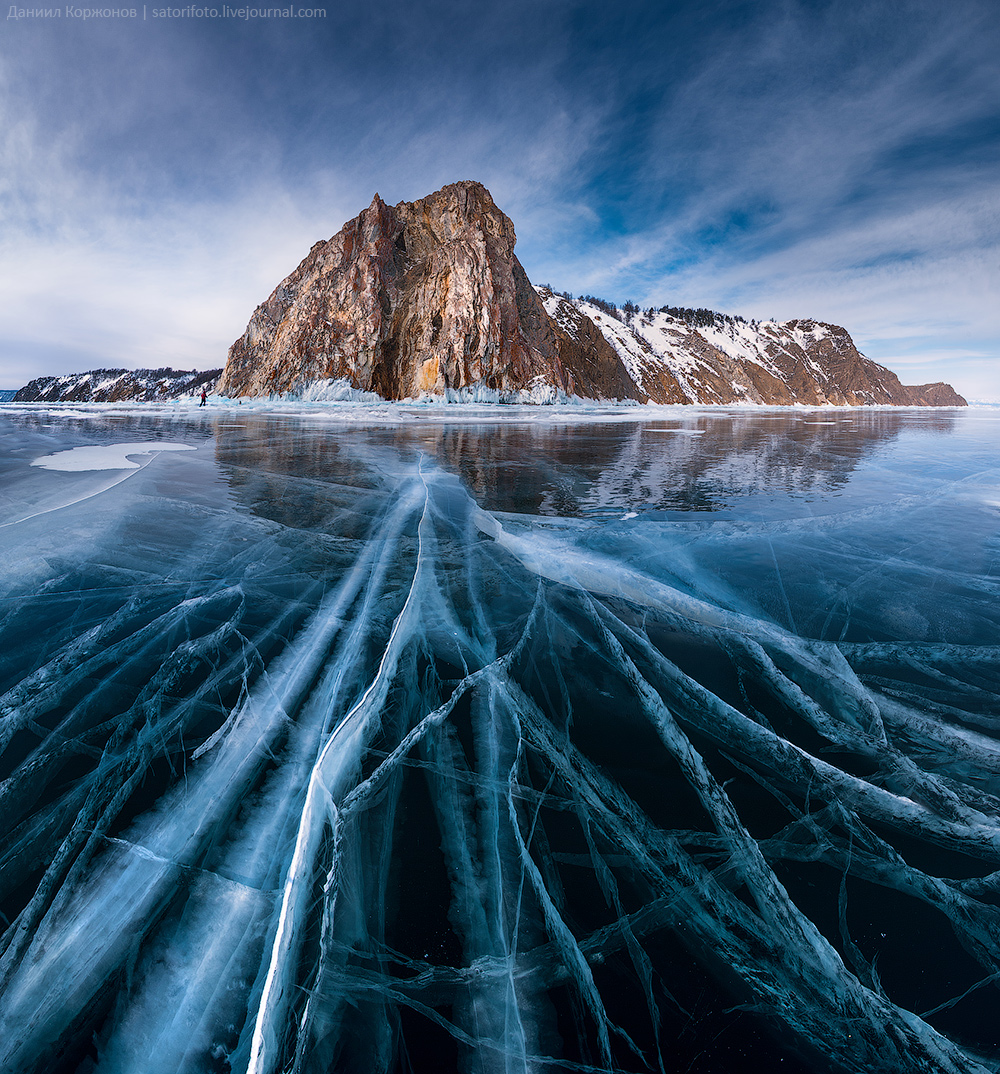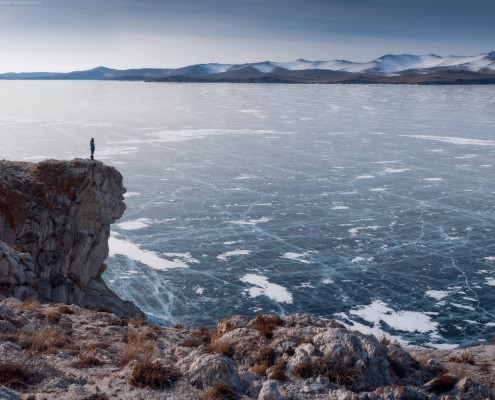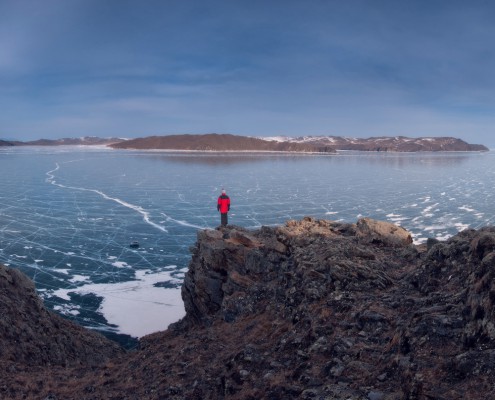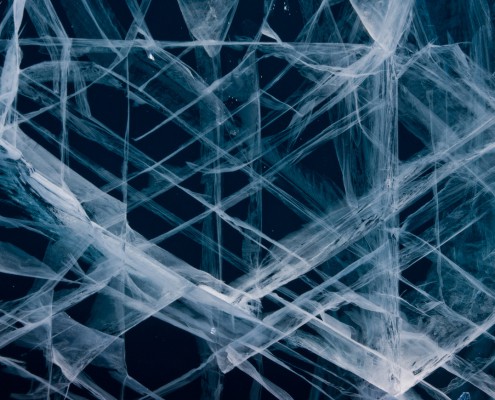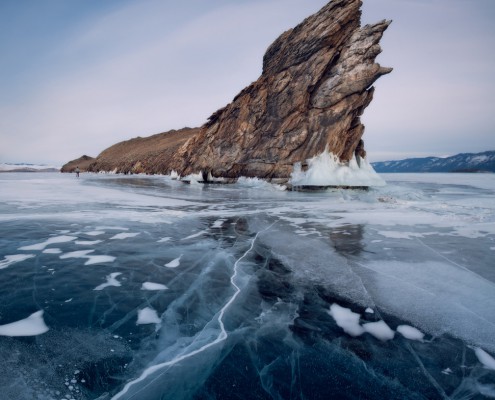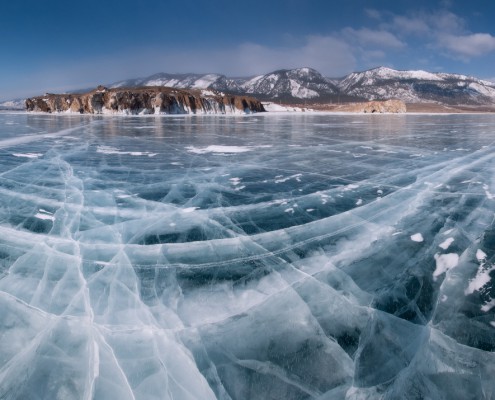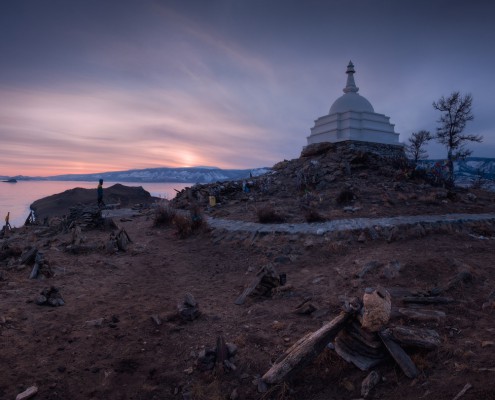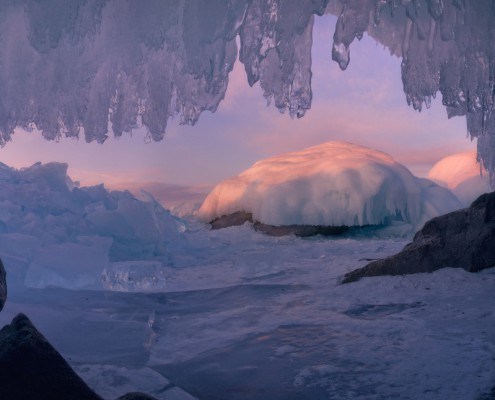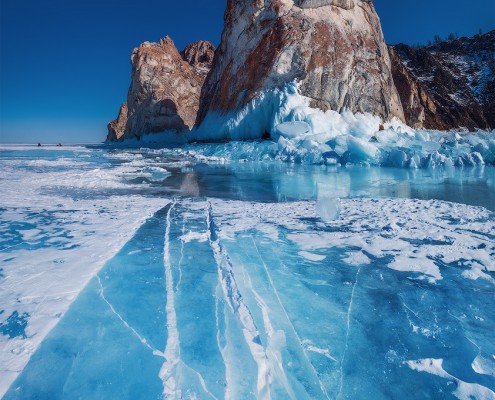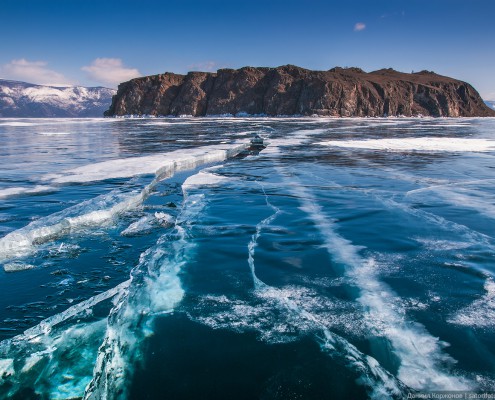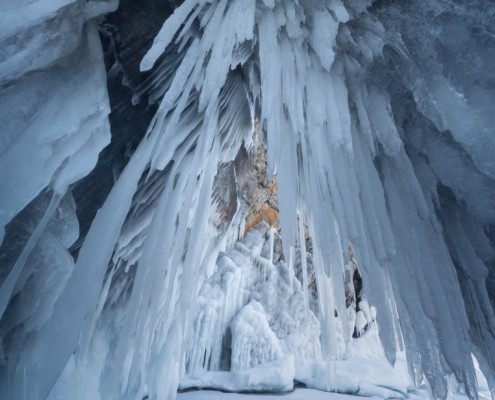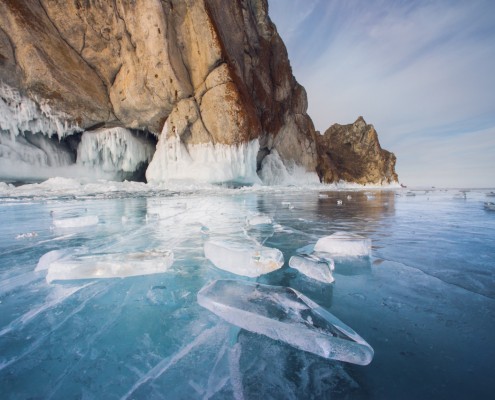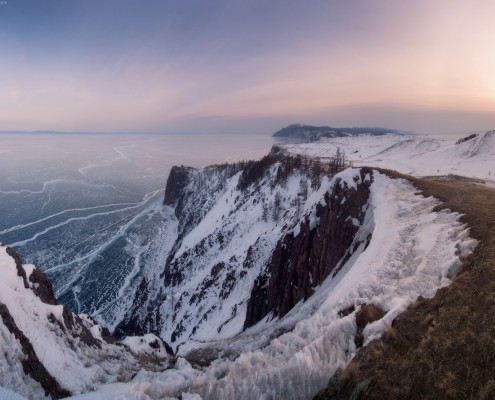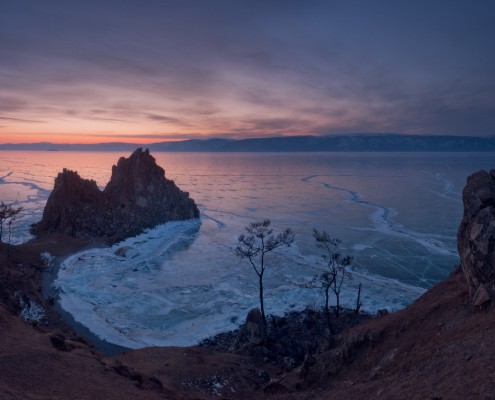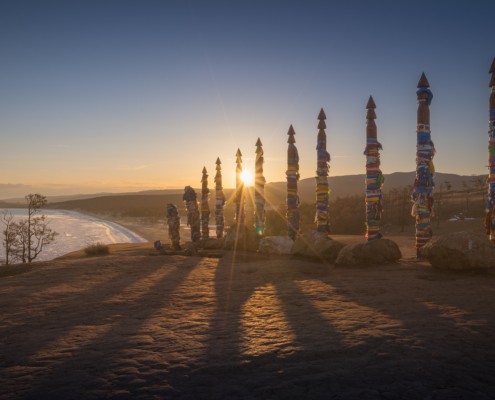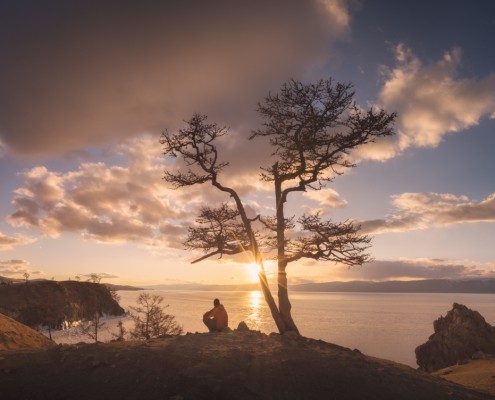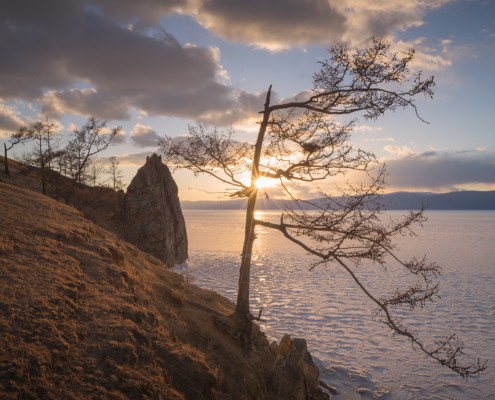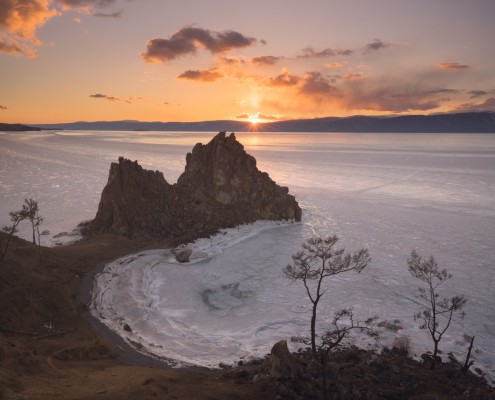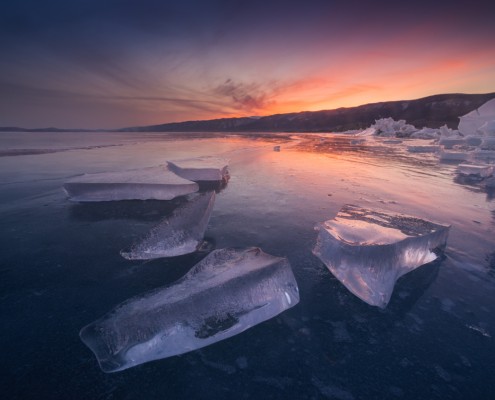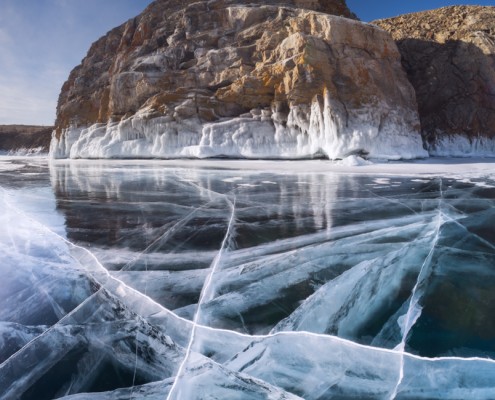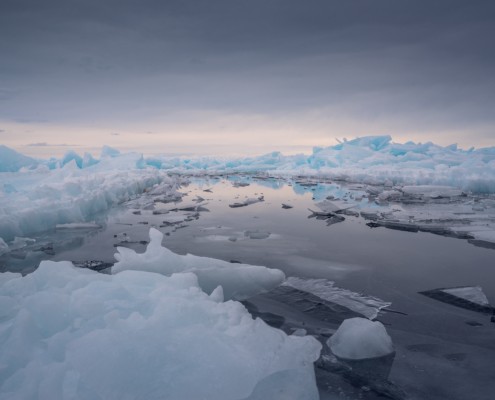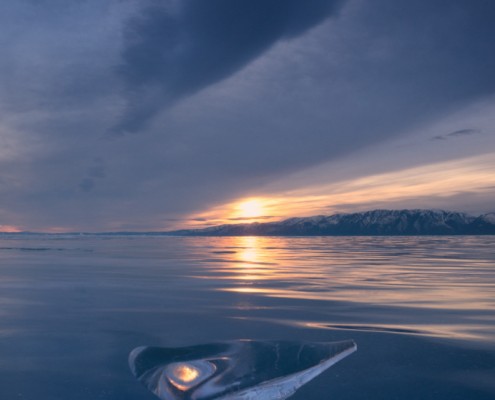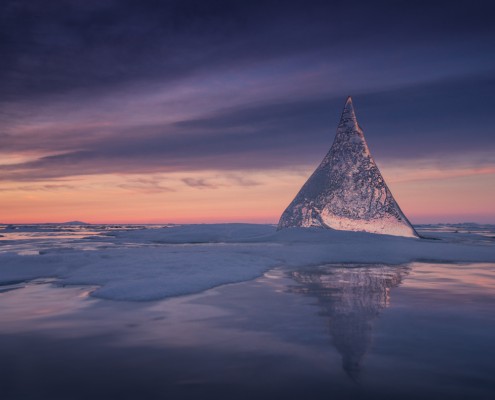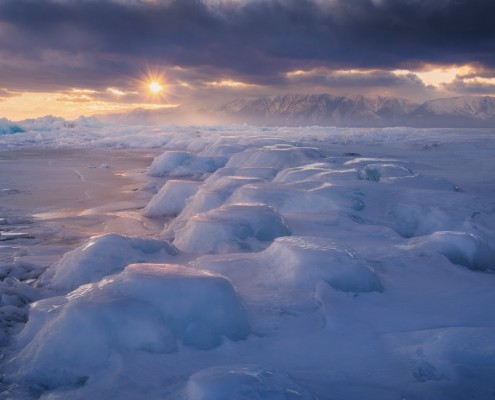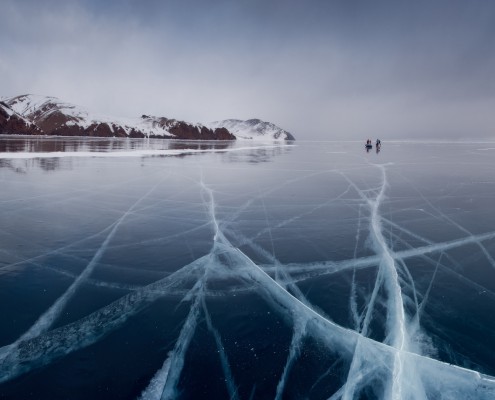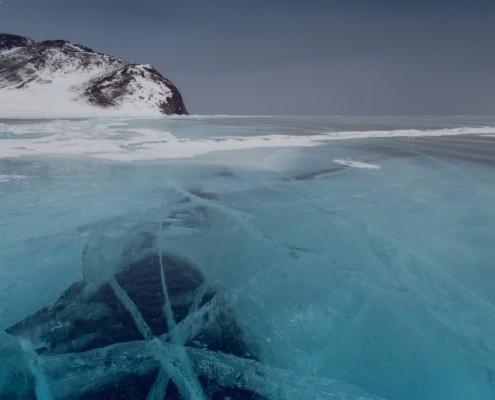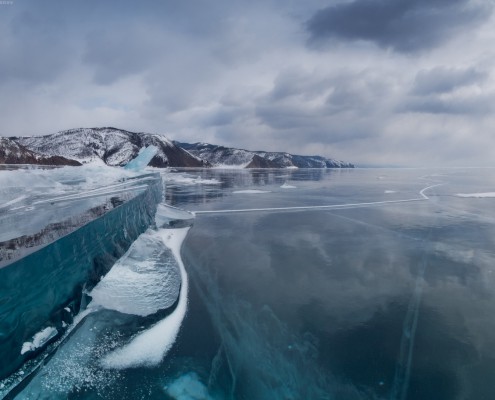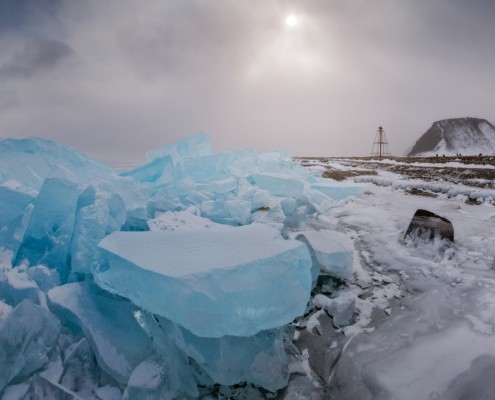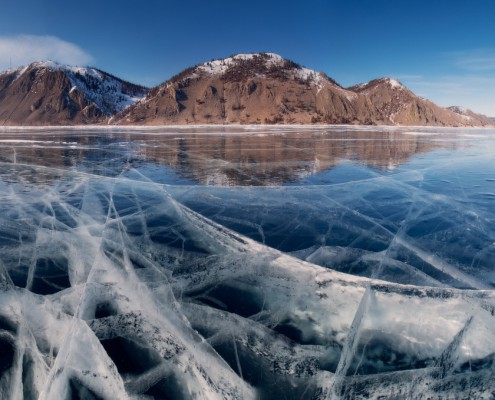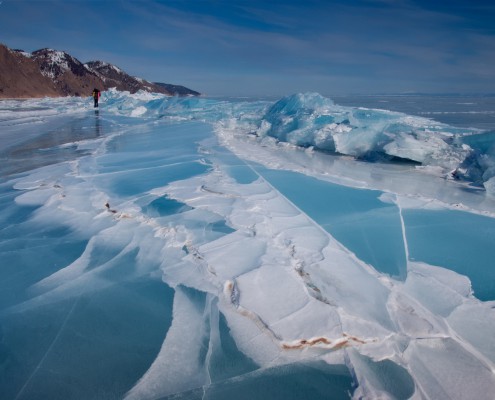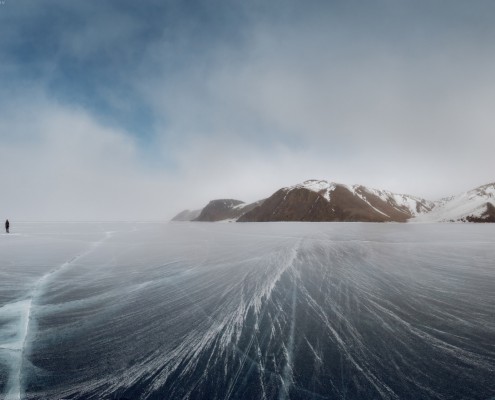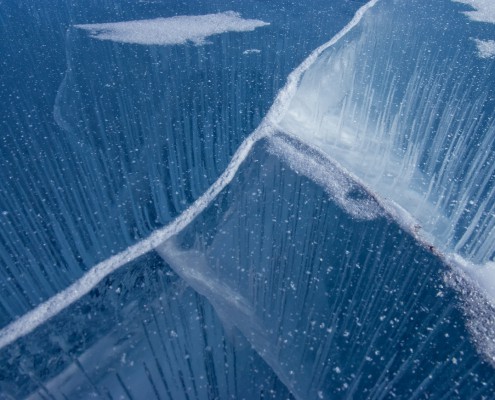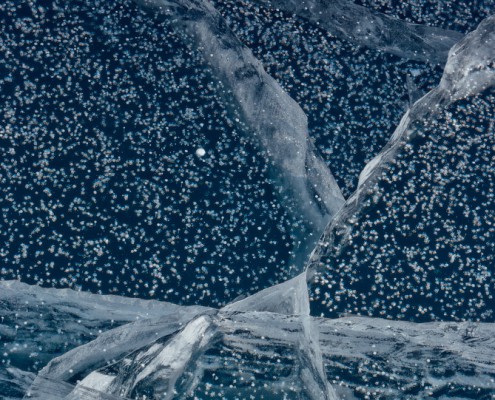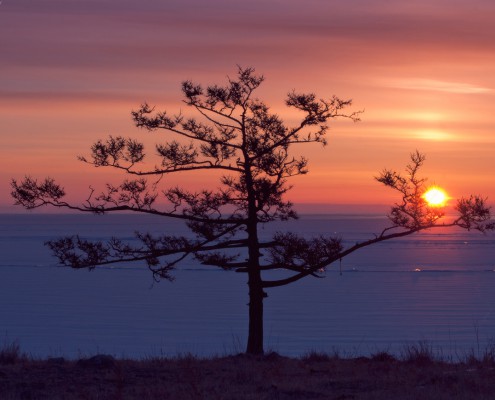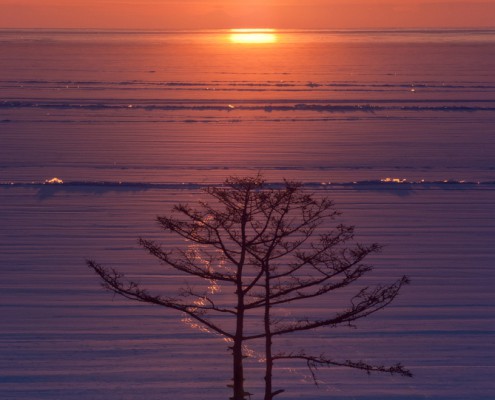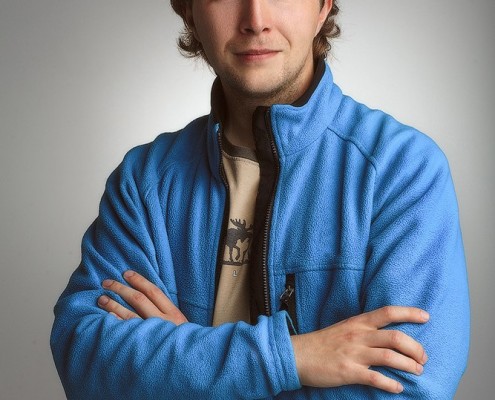Lake Baikal is one of the main wonders in Russia. It is especially beautiful in winter. Where else can you see a huge lake not covered with snow? When you step on the ice you feel like in outer space, there is a meter of clear ice and a kilometer of the purest water under your feet. We make this tour with maximum comfort and safety precaution as possible: most experienced drivers, rescue service at hand and best possible brand-new hotel of Baikal lake.
Photographers adore the Baikal. You can see ice texture, Olhon rocks and a great number of ice grottoes and caves on your way. It is comfortable to travel around the Baikal today –there are comfortable modern lodges with room facilities and cafes in Olhon. You may travel on a specially marked by EMERCOM ice track.
Why January? January is the best time to visit Baikal. The ice is amazingly clear and free of tourists, all ice caves are still clean and clear. The ice is usually free of snow in January, other months have a high risk of snow on ice.
Day 1, 23 January
Our trip starts with morning arrival to Irkutsk. You must arrive no later than 10:00 this day or the day before. Our cars with your English-speaking guide (me) will be waiting for you at the airport. We are on our way to the Baikal immediately. The journey takes 7-8 hours through endless Tazheranskaya steppe and by the evening we reach the ice waterway to Olhon Island. Olhon is a huge rocky island also known as the heart of the Baikal. These are the grottoes of Olhon where the marvelous caves appear. We usually search for such caves before our journey. The accommodation is at the comfortable and neat hotel with room facilities in Olhon – we stay in brand new hotel built in 2016, it reflects the European standard of accommodation. The program and safety measures on ice will be discussed while dinner at the hotel restaurant.
Day 2
We start our exploration of the Baikal from the Island of the Small Sea. The capes and grottoes of the Small Sea are incredibly picturesque. The icicles on Oltrec Island are worth seeing. They are called sokui. If sokui appear it means that winter will embrace and kiss the Baikal with its icy lips. From autumn to winter the water-level decreases by half a meter or even more, so intricate ice caves and icicles appear near the islands and on the capes. Moreover, wind-the kidder splashes water on the rocks. The ice freezes near the shores at first and the waters of the Baikal break with huge splashes upon the coastal ice-floes. We shoot the sunset on Ogoi Island with Buddhist mortar on the very peak. Ogoi has incredibly sharp shore shapes. We shoot it in the reflection of the pure ice of the Baikal at sunset.
Day 3
Imagine a beautiful winter fairy tale. There will be Hoboi caves and icy grottoes in it. Breaking waters and splashes freeze on the rocks forming sokui – icy sputters of astonishing forms. Grottoes transform into ice castles on the north side of the cape. This is the place where we will go with you at dawn to watch the first light from one of the icy Hoboi caves.
You can see a woman’s silhouette in the form of the rock that is why the southern Hoboi part is called Maid. Hoboi was named so because of a rock coming into the lake. The rock looks like a tusk (“hoboi” means “tusk” in Buryat). Here and there Hoboi is pierced by through holes evidently from the storming wind. There is a legend connected with this rock. Once upon a time there lived a young couple. A husband was hard-working and did his utmost not only for his family but helped everyone around him. His wife on the contrary was an envious and bad woman. She never got enough. So the Gods (spirits of the Baikal) gave the man a palace as a reward for his diligence and his wife was so envious that decided to ask for a palace as well. The Baikal punished her and turned into stone.
Day 4
Today we are shooting the Baikal from bird’s-eye view above Uzur cape. You will see the Northern part of the Baikal not far away from the cape Hoboi again. From high above there is a wonderful and splendid view to the Barguzinsky mountain range and to Olhon (the Baikal is 70-100 km in width here).
The rocks close to Uzur are worth painting. Red and yellow flames look like as if rising into the sky above the huge ice blocks. After morning shooting we go down to the ice to shoot Uzur rocks.
In the evening we have a shooting not far away from our hotel, on Burhan point.
Burhan point was historically named so probably because of the locals’ traditions to sacrifice to Buryat spirits in the rock’s cave. Moreover, there was shamans’ burial place there. The rock itself is located in the West of Shamanka, it’s 3 meters height and a long narrow passage goes through the rock in the East. Nowadays the cape is more often called Burhan. “Burhan” is the word that Buryat Buddhists call the Baikal tribal God. “Bur” is another name for Buddha. In old days there was a Buddhist chapel in this Shamans’ cave. There were a lot of statues of Buddhist gods, icons, incense sticks and different things for sacrifices inside of this cave.
Days 5 – 7
We continue to explore wonders of Small Sea close to the picturesque Baikal islands, capes and ice caves. We live in one place all the tour long and use this place as a base for everyday photography sessions. We have lots of nice locations prepared for you!
Day 7
After sunrise session at Baikal ice we return back to hotel, have our breakfast and depart to Irkutsk. The road will take up to 7 hours.
Day 8 – 30 January
Departure back home in the morning (transfer to airport is included).
Price: please inquire sending mail at satorifoto@gmail.com or via form below the page
Included in the price:
– All transfers (jeep or hovercraft, including drivers’ services, gasoline fees etc)
– Lodging in 4* hotels, all meals
– Instruction and master classes by professional English-speaking guides
Not included in the price:
– Airfare to and from Irkutsk airport
– Visas (if applicable)
– Single supplement (500 USD)
What to bring
Gear:
– DSLR camera with tripod and remote shutter release, its better to use spikes for your tripod
– A wide angle lens. For example, Nikkor 14-24 or Canon 17-40. Best lens for use in wide-angle scenes or architecture photography
– A middle-zoom lens such as a 24-70 mm
– A telephoto zoom lens, such as a 70-200 mm
Wear:
– Waterproof and windproof jacket (consider the average temperatures down to -20, but average is -5 C for March)
– Waterproof pants
– Warm down-jacket and thermal pants
– Casual clothes for dinners and lunches and photography workshops
– Knee protection (skateboard equipment, for example)
Tour leaders
Daniel Kordan
Daniel was born in Moscow area. In his childhood he graduated the art school. After that, he is studied in Moscow institute of Physics and Technology and became an optics physicist. During the study he gain experience not only in physics, but also in mountain climbing and hiking, guiding tourist groups in winter and in summer in Russian mountains. Right after graduation he became a guide of photo-workshops and chief editor of “Continent expedition” magazine. This magazine is about travel and adventures all over the world. He has got several awards in photography: Golden Turtle’ 13 Nature nomination winner, National Geographic Russia contest 2013 and 2014 finalist, Best of Russia’13 and ’14 winner, best photographer’13 finalist and others. He is spending most of his time in Norway, Lofoten islands and in Tuscany at villa Gaia, guiding groups of photographers.
I consider Baikal lake as top place for photographers from all over the world. I will help you to reveal its beauty.

